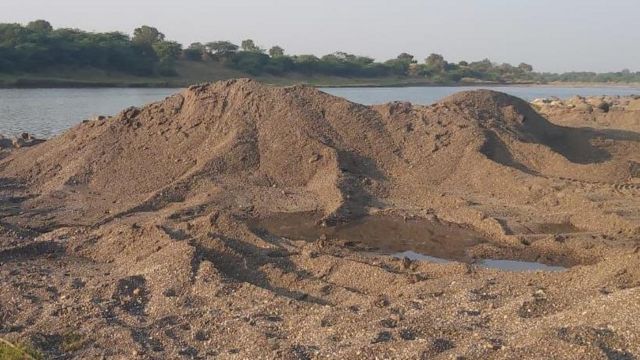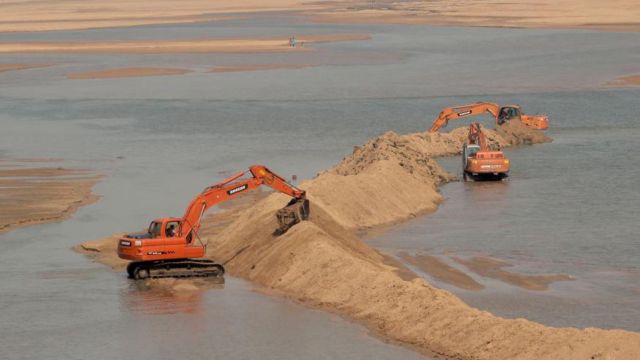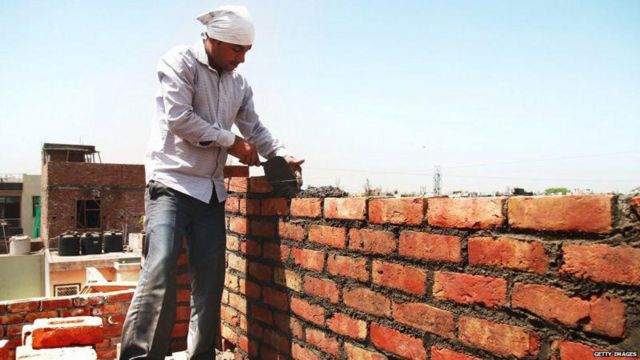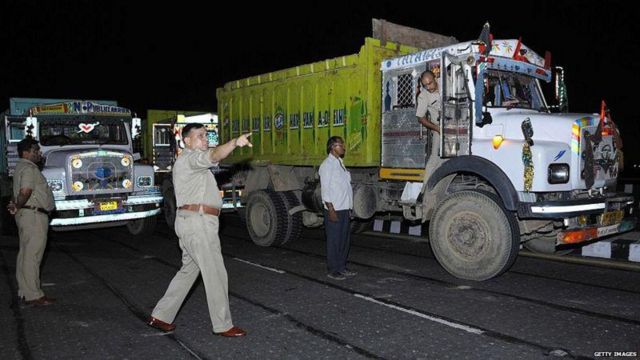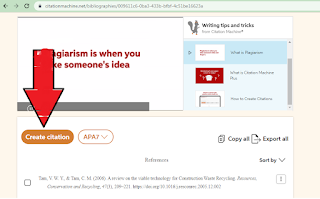नागरिकांना स्वस्त दरानं वाळू (रेती) मिळावी आणि अवैध वाळू उपशाला आळा बसावा, या उद्देशानं महाराष्ट्र सरकारनं नवीन वाळू धोरण जाहीर केलं आहे.
आज पासून (1मे पासून) एकेकाळी 7,000 रुपयांना मिळणारी ट्रॅक्टरभर वाळू महाराष्ट्र राज्यात केवळ 600 रुपयांना मिळणार आहे.
नवीन धोरणानुसार, सर्वसामान्य नागरिकांना 600 रुपये प्रती ब्रास किंवा 133 रुपये प्रती मेट्रिक टन इतक्या दरानं वाळू मिळणार आहे. वाळू वाहतुकीचा खर्च मात्र नागरिकांना करावा लागणार आहे.
एखाद्या व्यक्तीला बांधकामासाठी वाळू हवी असल्यास वाळूची मागणी ऑनलाईन नोंदवता येणार आहे, अशी माहिती महसूल मंत्री राधाकृष्ण विखे-पाटील यांनी दिली आहे.
YouTube पोस्ट समाप्त
प्रधानमंत्री आवास योजना तसंच आर्थिकदृष्ट्या मागास प्रवर्गातील लाभार्थ्यांच्या घरकुलासाठी संबंधित अधिकाऱ्यानं सादर केलेली यादी तहसीलदार तपासून पाहतील आणि तहसीलदारांच्या लेखी परवानगीनंतर लाभार्थ्यास वाळू डेपोतून विनामूल्य वाळू उपलब्ध करुन देण्यात येणार आहे.
वाहतुकीचा खर्च मात्र लाभार्थ्यास करावा लागणार आहे.
महाराष्ट्र सरकार प्रायोगिक तत्वावर 1 वर्षासाठी हे धोरण राबवणार आहे.
आता ‘अशी’ होणार वाळूची विक्री
महाराष्ट्र सरकारच्या आधीच्या वाळू धोरणानुसार, राज्यात वाळू घाटाचे लिलाव होत असत. पण, हे लिलाव वेळेवर होत नसल्यानं राज्यात वाळूचा तुटवडा निर्माण व्हायचा. दुसरीकडे बांधकामं मात्र थांबलेली नसायची.
यामुळे राज्यात वाळूची मागणी जास्त आणि पुरवठा कमी, अशी स्थिती निर्माण व्हायची. परिणामी नागरिकांना मोठ्या दरानं वाळू खरेदी करावी लागायची.
सर्वसामान्य माणसाला 7 ते 8 हजार रुपये प्रती ब्रास या दरानं वाळू खरेदी करावी लागायची.
एकीकडे वाळूचा तुटवडा आणि दुसरीकडे वाळूला मिळणारा प्रचंड दर, यामुळे राज्यात अवैध वाळू उपशाची प्रकरणं घडायची. अवैध वाळू उपसा रोखणाऱ्या सरकारी अधिकाऱ्यांना जीवे मारण्याचा प्रयत्नही व्हायचा.
आता मात्र नवीन वाळू धोरणानुसार, वाळू घाटाचे लिलाव बंद होणार आहेत.
राज्यात अनेक ठिकाणी अवैध वाळू उत्खनन केलं जातं.
नवीन धोरणानुसार, वाळूच्या उत्खननासाठी राज्य सरकारकडून आधी नदीपात्रातील वाळूचे गट निश्चित केले जातील.
या वाळू गटातून वाळूचं उत्खनन केलं जाईल. मग ही उत्खनन केलेली वाळू शासनाच्याच तालुका स्तरावरील वाळू डेपोमध्ये साठवली जाईल आणि तिथूनच तिची विक्री करण्यात येईल.
नदीपात्रातील वाळूचा गट निश्चित केल्यानंतर त्यातून वाळूचं उत्खनन आणि वाहतूक यासाठी संबंधित गावाच्या ग्रामसभेची शिफारस अनिवार्य राहिल.
वाळूचं उत्खनन, उत्खनन केलेल्या वाळूची डेपोपर्यंत वाहतूक, वाळू डेपोची निर्मिती आणि व्यवस्थापन यासाठी राज्य सरकारकडून निविदा प्रक्रिया राबवण्यात येईल.
वाळू मागणीची प्रक्रिया कशी असेल?
- ज्या ग्राहकांना वाळू हवीय, त्यांना महाखनिज (Mahakhanij) या पोर्टलवर वाळू खरेदीच्या मागणीची नोंद करणं आवश्यक राहिल. ज्यांना हे शक्य नाही, त्यांना सेतू केंद्रामार्फत ही मागणी नोंद करावी लागेल. यासाठी लागणारं शुल्क जिल्हाधिकारी ठरवतील.
- याशिवाय मोबाईल ऍपच्या माध्यमातूनही वाळूची मागणी नोंदवता येणार आहे. सध्या यावर राज्य सरकारचं काम सुरू आहे.
- एका कुटुंबास एका वेळी जास्तीत जास्त 50 मेट्रिक टन वाळू मिळेल. अधिक वाळू हवी असल्यास वाळू मिळाल्याच्या दिनांकापासून 1 महिन्यानंतर वाळूची मागणी करता येईल.
- वाळूची मागणी नोंदवल्यानंतर 15 दिवसांच्या आत वाळू डेपोमधून वाळू घेऊन जाणे ग्राहकास बंधनकारक असेल. वाळू वाहतुकीचा खर्च ग्राहकास करावा लागेल.
- वाळू डेपोतून वाळू विक्रीसाठी ग्राहकाचा आधार क्रमांक अनिवार्य राहिल.
वाहतुकीचा खर्च धरून प्रती ब्रास 3,000 रुपये लागणार
शासनाच्या डेपोतून प्रती ब्रास 600 रुपये दरानं वाळू मिळणार असली तरी या वाळूवर जीएसटी लागणार का आणि गौण खनिज कर आकारला जाणार का, हे पाहणंही महत्त्वाचं ठरणार आहे.
याशिवाय, ट्रॅक्टरभर वाळूच्या एका ट्रिपसाठी जाऊन-येऊन 10 किलोमीटर अंतरासाठी जवळपास 1 हजार रुपये वाहतूक खर्च आकारला जातो. किती अंतरावर वाळू वाहतूक करायची त्यानुसार हा दर कमी-जास्त होत असतो.
प्रातिनिधिक फोटो
बुलडाणा जिल्ह्यातील वाळू वाहतूक करणाऱ्या एका चालकानं नाव न छापण्याच्या अटीवर सांगितलं, “तालुक्याच्या ठिकाणाहून एक ट्रिप वाळू वाहतुकीसाठी आम्ही 2200 ते 2300 रुपये घेतो. जाऊन-येऊन हे अंतर 30 किलोमीटरपेक्षा अधिक असतं.”
याचा अर्थ डेपोपासून जवळच्या गावात वाळू वाहतुकीसाठी 1 हजार ते लांबच्या गावासाठी अडीच हजार रुपये लागणार आहेत.
वाळू उत्खननासाठीचे नियम
अवैध वाळू उत्खननाला आळा घालण्यासाठी राज्य सरकारच्या नवीन धोरणात काही नियम सांगण्यात आले आहेत. त्यात,
- 10 जून ते 30 सप्टेंबर हा पावसाळ्याचा कालावधी असेल आणि या कालावधीमध्ये वाळू उत्खनन करता येणार नाही.
- वाळूचे उत्खनन सकाळी 6 ते संध्याकाळी 6 या कालावधीतच करता येईल.
- नदीपात्रात जास्तीस्त जास्त 3 मीटर इतक्या खोलीपर्यंत निविदाधारक किंवा ठेकेदारास वाळूचे उत्खनन करता येईल.
- रेल्वे किंवा रस्ते पुलाच्या कोणत्याही बाजूनं 600 मीटर अंतराच्या आत वाळूचे उत्खनन करता येणार नाही.
महसूल अधिकारी काय म्हणतात?
राज्य सरकारच्या नवीन वाळू धोरणाविषयी आम्ही राज्यातील काही महसूल अधिकाऱ्यांशी चर्चा केली.
नाव न छापण्याच्या अटीवर महसूल विभागातल्या एका ज्येष्ठ अधिकाऱ्यानं सांगितलं की, “सरकारचं धोरण चांगलं आहे. यामुळे नागरिकांना कमी दरात वाळू मिळणार आहे. याआधी किती दरानं वाळू विकावी यावर काही कंट्रोल नव्हतं. वाळू घाटातून वाळू काढली की ठेकेदार त्याला हव्या त्या किंमतीला ती वाळू विकायचा. आता मात्र वाळू गटातून वाळू काढली की ती ठेकेदाराला थेट वाळू डेपोत न्यावी लागेल. त्याला ती दुसरीकडे नेता येणार नाही. यामुळे वाळूवरील नियंत्रण वाढणार आहे.”
“डेपोतील वाळूवर लक्ष ठेवण्यासाठी, तिथला रेकॉर्ड ठेवण्यासाठी तिथं पुरेशा प्रमाणात कर्मचारी लागणार आहे. आधीच कर्मचाऱ्यांची संख्या कमी आहे. त्यामुळे मग तिथं कुणाला नेमणार हा प्रश्न आहे?,” हा मुद्दाही महसूल अधिकारी उपस्थित करत आहेत.
बांधकामासाठी वाळू मोठ्या प्रमाणावर लागते.
धोरण चांगलं पण...
महाराष्ट्र राज्य तहसीलदार-नायब तहसीलदार संघटनेचे कार्याध्यक्ष सुरेश बगळे यांच्या मते, “याआधी वाळू घाटाचा लिलाव झाला की संबंधित परवानाधारक ती वाळू थेट ग्राहकांना विकत असत. अशावेळी वाळू अवाजवी दरानं विकली जायची. यात एकप्रकारची एकाधिकारशाही निर्माण झाली होती. यातूनच वाळू माफिया तयार झाले होते. आता या प्रकाराला आळा बसेल.
“कारण नवीन धोरणानुसार, वाळू गटाचे टेंडर निघतील. उत्खननाचं टेंडर मिळालेली व्यक्ती त्या गटातून वाळूचं उत्खननं करेल आणि ती वाळू त्या भागातल्या डेपोमध्ये पाठवली जाईल. या डेपोतूनच नागरिकांना ती वाळू घेता येईल. जवळपास 7 हजार रुपये ब्रासनं मिळणारी वाळू 600 रुपयांची पावती फाडून मिळत असेल तर ते ग्राहकांच्या फायद्याचंच आहे. त्यामुळे संघटना सरकारच्या या धोरणाचं स्वागत करते.”
पण, वाळू गटापासून डेपोपर्यंत वाळू आणण्यावर महसूल विभागाला लक्ष केंद्रित करावं लागेल, हे एक विभागासमोरील आव्हान असेल, असं निरीक्षण बगळे नोंदवतात.
तर, वाळू गटापासून वाळू डेपो जवळच असणार आहेत. तो फार काही अंतरावर नसेल. यामुळे वाळू गटापासून वाळू डेपोपर्यंत होणारी वाहतूक आणि तेवढ्या मार्गावर लक्ष ठेवणंही सोपं होणार आहे, असंही महसूल अधिकारी सांगत आहेत.
प्रातिनिधिक फोटो
वाळू वाहतुकीचे नियम
नवीन वाळू धोरणानुसार, वाळू वाहतुकीसाठी पुढील नियम सांगितले आहेत.
- वाळूगटातून वाळू डेपोपर्यंत वाळूची वाहतूक ट्रॅक्टर किंवा 6 टायरच्या टिप्पर या वाहनांनी करणे बंधनकारक राहिल.
- वाळूगटापासून वाळू डेपोपर्यंत वाळूची वाहतूक करणारे ट्रॅक्टर आणि टिप्पर या वाहनांची संख्या आणि त्यांचे क्रमांक याची नोंदणी करावी. या वाहनांव्यतिरिक्त इतर वाहनांनी वाळू वाहतूक केल्याचे आढळल्यास निविदाधारकावर दंडात्मक कारवाई केली जाईल.
- वाळूगटातून वाळू डेपोपर्यंत वाळूची वाहतूक करणाऱ्या वाहनांना जीपीएस यंत्रणा बसवणं बंधनकारक राहिल.
- सदर वाहनानं वाळू डेपो वगळता इतरत्र वाळूची वाहतूक केल्यास ते वाहन जप्त करून दंडात्मक कारवाई केली जाईल.
वाळू पुरवठ्यासाठी सध्या तरी तालुक्याच्या ठिकाणी डेपो तयार करण्यात येत आहेत. त्या त्या भागातील वाळूची मागणी लक्षात घेऊन डेपोंची निर्मिती केली जाऊ शकते, असाही अंदाज काही अधिकारी बांधत आहेत.
सध्या राज्य सरकार 1 वर्ष प्रायोगिक तत्वावर हे धोरण अवलंबणार आहे. अंमलबजावणी सुरू झाल्यानंतरच त्यातल्या त्रुटी लक्षात येतील आणि मग त्यात सुधारणा करता येतील, असंही महसूल अधिकारी सांगत आहेत.
